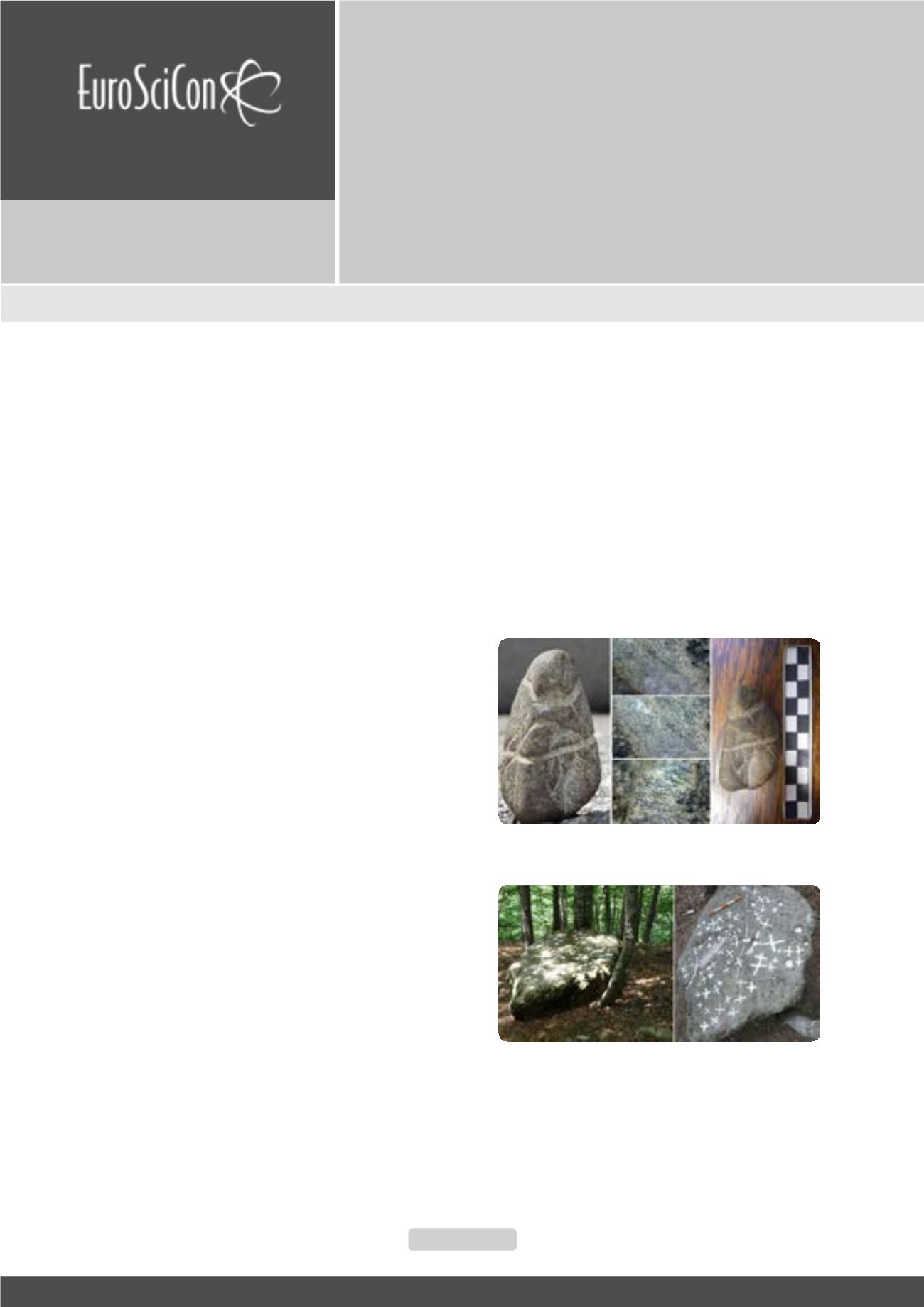

Archaeology & Anthropology 2018
Global Journal of Research and Review
ISSN: 2393-8854
Page 29
October 01-02, 2018
London, UK
1
st
Edition of international Conference on
Archaeology and
Anthropology
L
ot of archaeological sites are directed according to celestial
bodies, their effects on the Earth, as well as their impacts
on the human behaviour towards their environment, especially
throughout the Neolithic and metal age thanks to the megaliths
and artefacts in relationship with the sun and the moon. The
archaeoastronomy study is used to understand the ancestral
worship to measure the time for the pastoral and the ritual
activities. A fortuitous discovery in August 2015 made in the
Alpes de Haute Provence by voluntary archaeological association
GAPS awakened a renewed interest for the Blanche valley’s
archaeology. A feminine statuette was found around a loch
nearby two glacial tills carved of a lunar timetable graduated,
stars and cupula; dated 3500 BC by the prehistorian J Courtin.
The first approach caught our attention for its particularities
attached to an observatory, for the fertility cult, for the fact it has
never been registered as a monument and because since other
sites appeared in its surroundings. The palaeoecological rapport
by Natura 2000 tells three dates of human occupation: 4500-3500
BC keeps up a correspondence with the astronomical devotion
and confirms the date estimated, 970 BC really short with no
pertinent evidence, for medieval age the loch was brought into
play for the textile manufacture, date not kept. The statuette
is anchored in the prehistoric statue tradition, here with two
triangular forms and two crescent forms, its fourth faces match
up the principal fourthmoon faces, which reveal with the calendar
a mathematic system to rhythm the agricultural bustles instead
of the cup-marked stones, which reveal a cult during the Taurus
constellation era, could be the sky chart. In the south-east French
Alpes Mountain, this site shows the motion of use of the rocs
putting them in line with the belief about water and the sky.
Figure1:
The microscope views of the statuette with the feminine
artefact. J. Daguebert and GAPS section.
Figure1:
East cup-marked stone with 13 cupula, 61 stars and the moon
timetable graduated. J. Daguebert and GAPS section
Julie Daguebert
University of Free Time Durance Provence, France
Julie Daguebert, Glob J Res Rev 2018, Volume 5
DOI: 10.21767/2393-8854-C1-003
The new interest for the French mountain heritage from the
celestial archway to the earth, a feminine moon face’s worship
statue reveals an archaeoastronomical site, Loch Saint Léger,
transition Neolithic – Chalcolithic, Alpes de Haute Provence, France
















